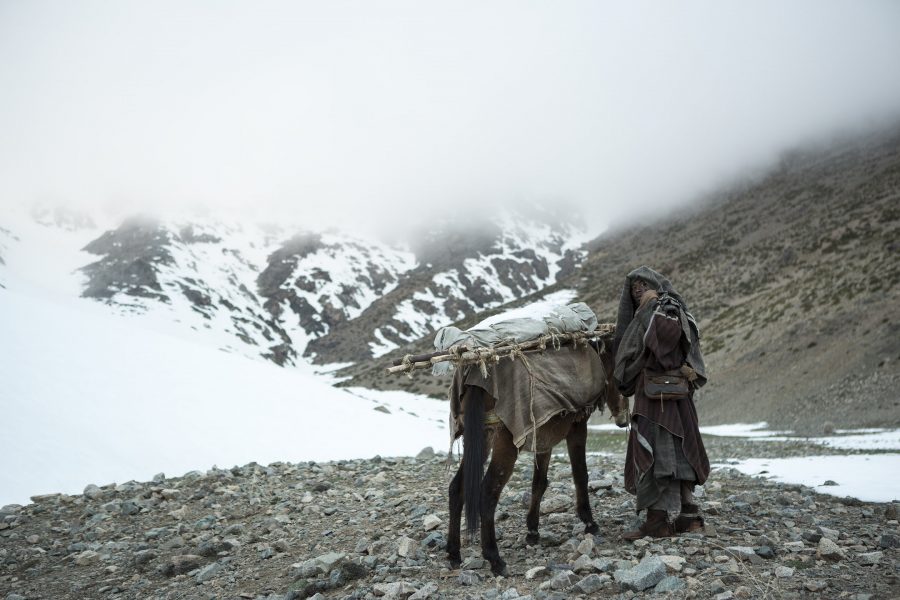Traversing Nature in ‘Mimosas’
Courtesy of Anthology Film Archives
Mimosas, a film directed by Oliver Laxe, is a winner of the Critics’ Week Grand Prize at the Cannes Film Festival. It chronicles what a caravan faces while carrying a dying sheikh into the Moroccan Atlas Mountains.
April 11, 2017
The healing effect and peace are so strong in “Mimosas” that it is easy to forget that a caravan is on an odyssey full of potential danger. The film tells the story of a curing journey — a religious pilgrimage through nature from a nuanced perspective.
The film begins with a group of people wearing woolen clothes, riding their mules and staggering through a prairie, which makes clear that it occurs centuries ago. The caravan wants to escort its dying sheikh (Hamid Fardjad) to the Moroccan city of Sijilmasa, a sacred place where the sheikh wants to be buried. The sheikh then orders the caravan to take a short, yet dangerous path up the mountain against everyone else’s wishes. Then in a disorienting fashion, the camera cuts to a modern parking lot where Shakib (Shakib Ben Omar), a mechanic and an amateur preacher, is immersed in telling a story about spirituality to a group of drivers. Shakib’s boss later asks him to join the caravan as a co-driver.
Shakib appears like a prophet midway on the mountain. Shortly after he joins the caravan, the sheikh dies and the majority of the caravan turns back. Shakib, together with former bandits Ahmed (Ahmed Hammoud) and Said (Said Aagli), continue the trip to the city of Sijilmasa despite not knowing the route. “Mimosas” doesn’t settle into focus until Said is killed by two actual bandits. Even though Shakib invokes Ahmed’s spiritual faith, Ahmed doesn’t confront the bandits to save his friend due to the impulse to protect himself first.
“Mimosas” is an anachronistic addition to the spiritual Western subgenre. The road story depicts people traveling through the natural world to accomplish a spiritual goal against all odds, but characters hope for the resolution of the internal world. This theme is reminiscent of director Gus Van Sant’s 2003 film “Gerry,” which follows two men combatting their fear of death.
Oliver Laxe, the director of “Mimosas,” is Spanish, but he bases his film on Sufi traditional tales and its Moroccan setting. He makes great use of fluid editing. Filmed completely in Morocco, the long, static shoots of the scenery are healing to view. While the film lacks variety in camera movements, it reveals the power of the mythical force of nature by immersing the humble men into its energy and beauty.
In the last scene, the film cuts back to its modern setting and alludes to Ahmed’s becoming an underdog and Shakib a knight. The reason for constructing two temporalities goes unexplained and the boundary between them is blurred. Lacking context and details, the film turns boredom into curiosity and keeps viewers on the edge of their seats as they follows the characters’ footsteps across snowy mountains and through the desert sunset. A half-finished revelation and an opaque dream, “Mimosas” leaves the audience musing in its picturesque vision of nature.
Email Xiangdi Chen at [email protected].



























































































































































